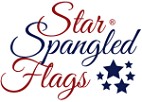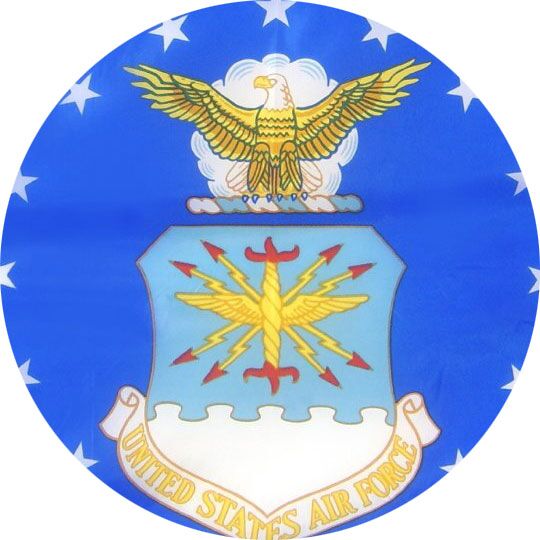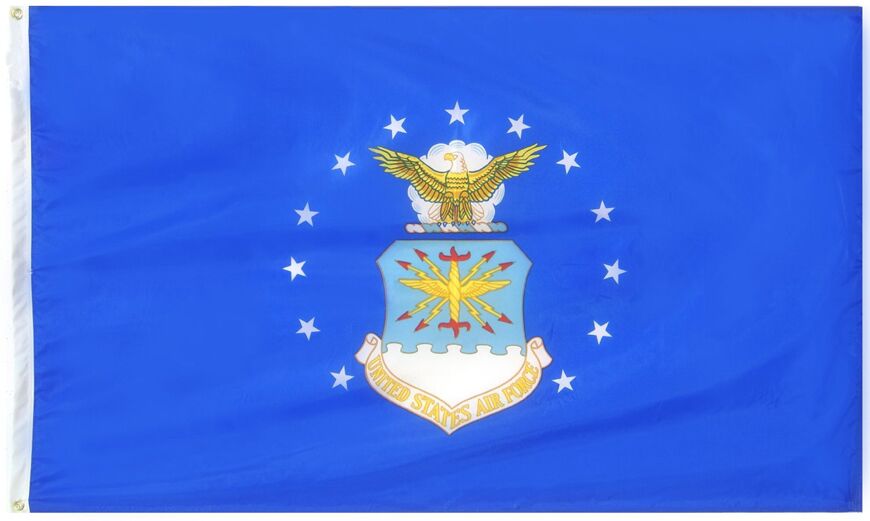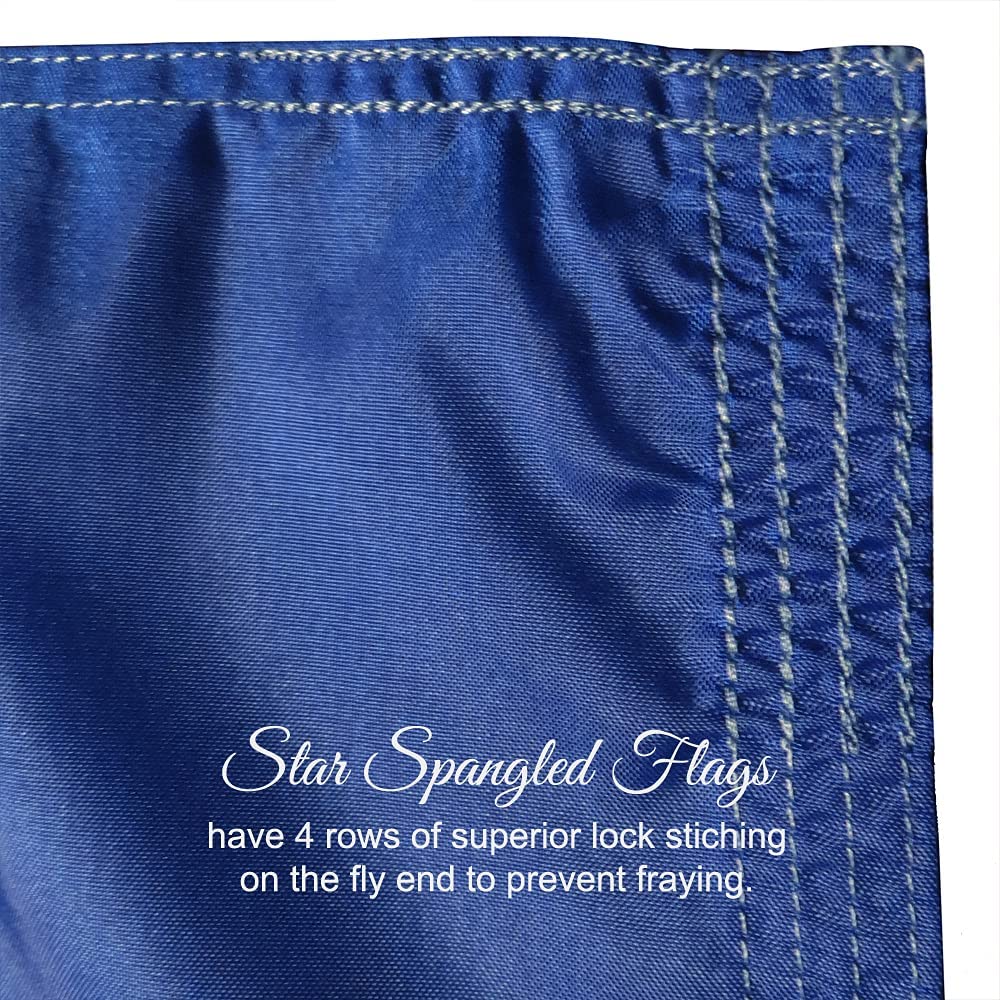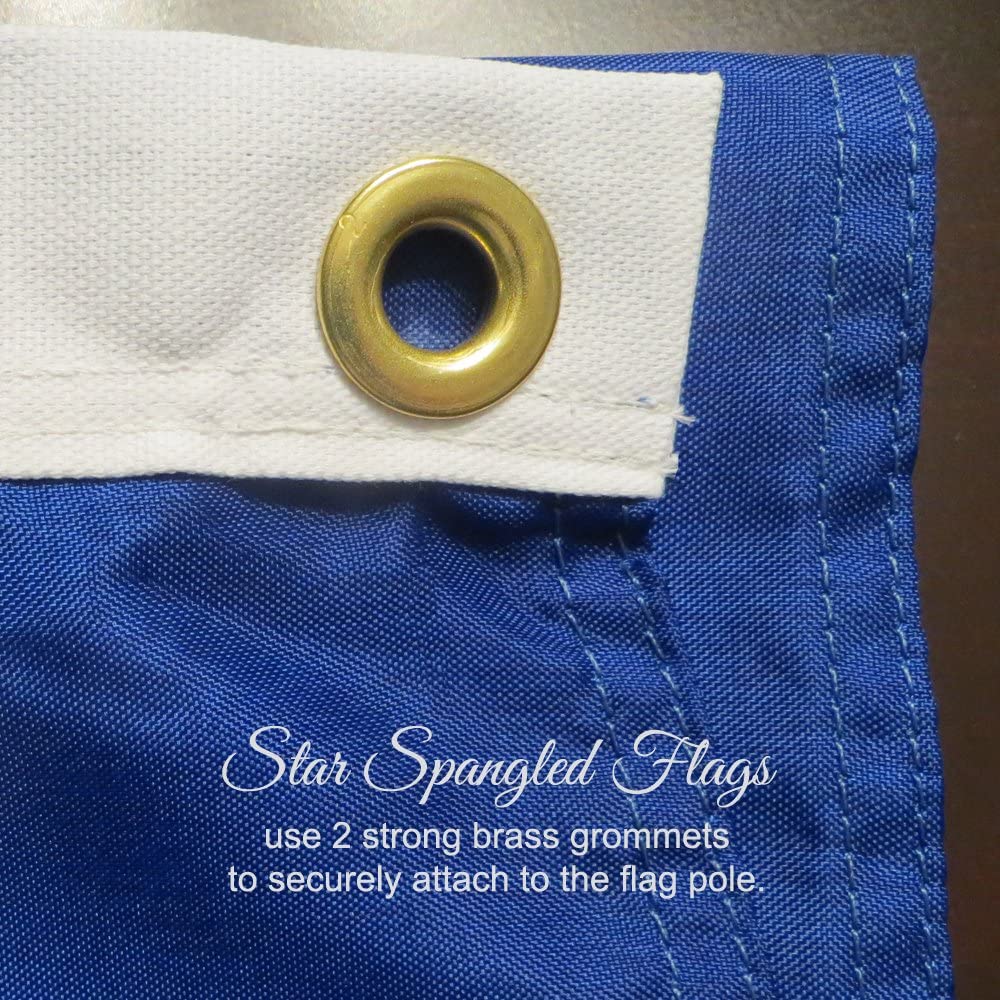- US Air Force flag description
- US Air Force flag reviews
- US Air Force flag history
- US Air Force flag facts
- US Air Force flag FAQs
US Air Force Flag Questions
Air Force flags, Made in USA
All of our Air Force flags are printed on our 200 denier thick nylon flag fabric. This special fabric is sun-protected and water resistant. The flag also features two brass grommets and 4 rows of stitching on the fly end, plus reinforced corners to prevent fraying. And as with all our flags, both materials and labor are 100% made right here in the United States. Add it to your shopping cart today and show your support for our troops!
Product Description
The flag for the US Air Force was offically adopted on March 1951 by Pres. Harry Truman. It is a flag with a blue background, with 13 white stars and the Air Force Seal – the 13 stars representing the orignal 13 colonies In the crest is the American blad eagle, a cloud formation, and a wreath. The cloud formation represents the creation of a new firmament. The wreath is made up of 6 alternate folds of silver and blue.
The parade or indoor version has a gold fringe border, while the outdoor version is plain.
Overview of the US Air Force Flag
Each branch of the U.S. military has its own official flag. The flag of the U.S. Air Force is the official flag for our country’s Air Force. As previously mentioned, it features the U.S. Air Force’s crest and shield. The crest and shield is comprised of the Department of the Air Force’s coat of arms. On the flag of the U.S. Air Force, there’s a bald eagle standing over the crest and shield with a wreath of 13 stars.
The bald eagle, of course, symbolizes freedom. During our country’s early years, the Founding Fathers selected the bald eagle as the emblem for the United States. They recognized the bald eagle as a symbol of freedom and independence. The flag of the U.S. Air Force features a North American bald eagle to symbolize freedom.
The 13 stars on the flag of the U.S. Air Force represent the original colonies. It’s similar to the American flag. On the American flag, there are 13 stripes representing the 13 original colonies. The flag of the U.S. Air Force doesn’t have stripes. Rather, it has 13 stars wrapped around a North American bald eagle in a wreath-like formation. Each of these 13 stars represents one of the original colonies.
History of the US Air Force Flag
The U.S. Air Force flag was adopted in 1951 by President Harry S. Truman. Prior to being adopted, the U.S. Air Force sought designs for a new seal from the public. A group of about 30 high-ranking Air Force generals then held a meeting to select one of the designs. This ultimately led to the adoption of the modern-day U.S. Air Force flag.
Alternative Variants
It’s important to note that the flag of the U.S. Air Force is available in two variants. They both feature the same design. The only difference is that one of them has a 33:26 aspect ratio, whereas the other variant has a 4:3 aspect ratio. The 33:26 variant is also known as the Ceremonial Department Flag. The smaller variant — the one with a 4:3 aspect ratio — is usually displayed as a standalone flag without streamers.
#1) Introduced in 1951
The U.S. Air Force flag was introduced in the mid-20th century. In 1947, the U.S. Air Force began accepting proposals for an official flag. One of these proposed designs was then approved by President Harry S. Truman. And just a few years later in 1951, President Harry S. Truman officially adopted the proposed design as the U.S. Air Force flag. While other flags have been revised since their respective origins, the U.S. Air Force flag has remain the same ever since it was adopted in 1951.
#2) The Stars Represent the Original Colonies
You may notice that the U.S. Air Force flag has 13 white stars. Like the stripes on the American flag, these 13 white stars represent the original 13 American colonies.
#3) Features 6 Folds of Silver and Blue
A cloud formation is included on the U.S. Air Force flag as part of the U.S. Air Force’s crest and shield. This cloud formation symbolizes the creation of a new firmanent. Alongside the cloud formation is a wreath consisting of a half-dozen folds of silver and blue. It’s a colorful element that distinguishes the U.S. Air Force flag from other flag designs.
#4) Available in 2 Versions
There are two versions of the U.S. Air Force flag: a large version and a small version. The large version uses an aspect ratio of 33:26. Also known as the Ceremonical Department Flag, it supports the use of fringe and streamers. The large version can be fitted with either 2-inch-wide fringe or streamers. The smaller version, on the other hand, uses an aspect ratio of 4:3 and cannot feature fringe or streamers.
#5) Designed By Dorothy Gatchell
The U.S. Air Force flag was designed by Dorothy Gatchell. Gatchell submitted her design to the Department of the Air Force. While Gatchell designed the U.S. Air Force flag, though, the crest and shield used in the flag’s design was designed by Arthur Dubois.
- What do the designs on the Air Force Flag represent?
- When and by whom was the Air Force Flag approved?
- How are you supposed to fly the Air Force Flag with the American Flag?
- Where can I purchase an Air Force Flag?
What do the designs on the Air Force Flag represent?
The flag of the United States Air Force consists of the coat of arms, 13 white stars and the Air Force Seal, on a blue background. The 13 stars represent the 13 original colonies, the three star grouping at the top portray the three Departments of the National Defense Establishment (Army, Navy, and Air Force). The crest includes the American bald eagle, the eagle’s head is turned to the right and symbolizes facing the enemy–looking toward the future and not dwelling on past deeds. The cloud formation depicts the creation of a new firmament, and the wreath, composed of six alternate folds of silver and blue, incorporate the colors of the basic shield design.
When and by whom was the Air Force Flag approved?
In September 1947, proposed drawings of the Air Force Seal were first exhibited in the office of the Secretary of the Air Force. Later, a conference of approximately 30 top-ranking Air Force general officers considered the preferred one. After several different proposals, the final drawing of the Department of the Air Force Seal was completed in the Office of the Quartermaster General, Department of the Army, and approved by Harry S. Truman, President of the United States, on 1 November 1947 and officially adopted on 26 March 1951.
How are you supposed to fly the Air Force Flag with the American Flag?
If you are flying the Air Force and American flags on the same pole, the American flag should be on the top and larger than the Air Force flag. If you are flying them on different poles, the American Flag should be on the observer’s left and the Air Force Flag to the observer’s right. Please remember when flying your flags at night they should be illuminated. Please be sure to choose all-weather flags for outdoor use.
Where can I purchase an Air Force Flag?
If you are looking for a great, 100% made in the USA, Air Force Flag, then try Star Spangled Flags. Their Air Force Flags are 100% made in the USA, have a 100% satisfaction guarantee and they offer free shipping. Their flags are treated so they dry fast and resist sun and chemical deterioration which keeps the colors strong against ultraviolet rays in the bright sunshine. The material they use is a heavyweight strong nylon which makes them tough and long lasting. They also use two rows of superior lock stitching and on the fly end they use 4 rows of lock stitching to prevent unraveling and fraying thus improving its’ lifespan.
